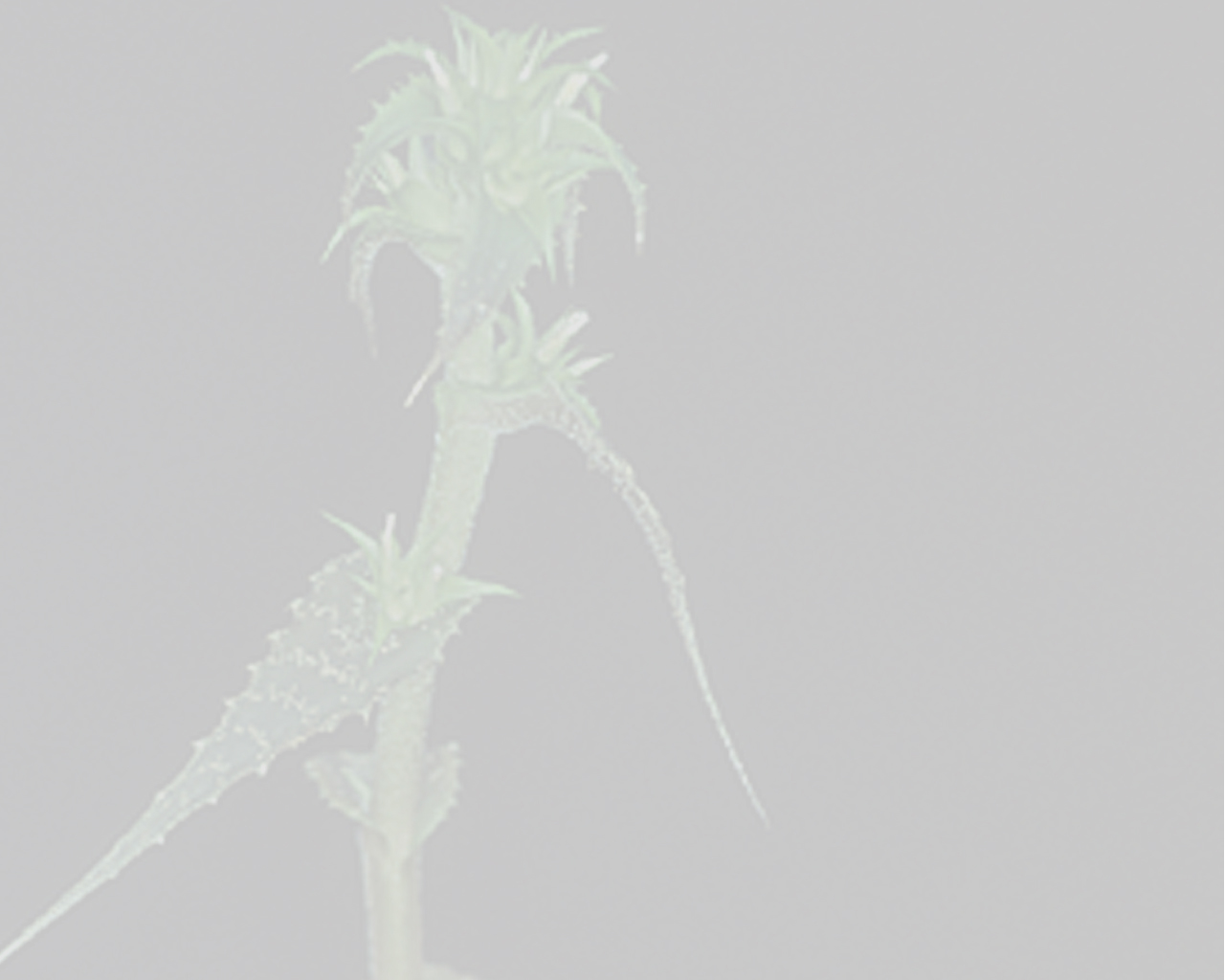

 Orthophytum ophiuroides Louzada & Wanderley[as Orthophytum ophiuroides Louzada & Wanderley]
Orthophytum ophiuroides Louzada & Wanderley[as Orthophytum ophiuroides Louzada & Wanderley]Diagnose: —Species nova Orthophytum navioides (L.B. Sm.) L B. Sm. affine, sed bracieis florigeris et sepalis rubris (vs. viridibus), petalis minoribus (ca. 1,5 x 0,4 vs. 2,5 x 0,7 cm), trichomatibus capitatis sepalorum et petalorum nullis differt. Observations: —Introduction
The genus Orthophytum is represented in general, by rupicolous plants, inhabiting dry substrata on rocky outcrops, exposed to high light or on shaded humid faces of waterfalls near the edge of rivers (Versieux & Leme 2007, Wanderley 1990, Wanderley & Conceição 2006).
Orthophytum was described by Beer (1854), however the epithet was not applied specifically to analyzed material. Secondly, Smith & Downs (1979), showed the genus with 17 species. Meanwhile, the species later published to the genus now reaches 55 species and seven varieties (Luther 2006, Versieux & Leme 2007).
The genus Orthophytum is distributed from the Northeast to the Southeast areas of Brazil, occurring in the states of Pernambuco, Paraíba, Bahia, Minas Gerais and Espírito Santo, with two diverse centres, the Cadeia do Espinhaco, between States of Bahia and Minas Gerais and the inselbergs in the domain of the Atlantic forest in Espírito Santo and Minas Gerais states. (Leme 2004, Wanderley & Conceição 2006).
As part of the taxonomic revision of the genus Orthophytum, the identity of Orthophytum navioides was verified as being not very clear, especially in the type material for that species which was incomplete, with absence of petals and without important information on the herbarium label. Because of this, the scarce collections of O. navioides are, sometimes, confused with O. amoenum, a species also endemic to the Chapada Diamantina and with imprecise delimitation.
The present work shows the description of a new species, Orthophytum ophiuroides Louzada & Wand., coming from the Municipality of Lencois in the state of Bahia, while explaining the habitat of O. navioides (L B. Sm.) L.B. Sm., related morphology to the new species and presents little known information at the moment.
Material and methods
For the accomplishment of this study, collections of several herbaria were examined (acronyms seconded by Holmgren et al.1990), and all of the new collections obtained in the three botanical expeditions made in Chapada Diamantina. The collections were incorporated in the collection at Herbárium SP and some live representatives were incorporated in the bromeliad collection of the Institute of Botany, São Paulo.
For the complemental study of the descriptions of the taxa, materials in flower and/or fruit were fixed in ethanol 70%, coming from collections made during the development of the present work.
The terminology used follows Radford et al. (1974).
Results and Discussion
Orthophytum ophiuroides (Fig 3A) as well as other species of the genus, such as O. humile L.B. Sm. and O. navioides (L.B. Sm.) L.B. Sm., inhabit shaded rocks in the margins of river waterfalls.
Leme (2004) considers the genus Orthophytum as divided in complexes and subdivided into subcomplexes of species. In this conception, O. ophiuroides is included in the subcomplex " amoenum ", characterized by the presence of white petals, with the centre of the rosette intense red, passing to green, contrasting with the other leaves. The stem is short and inconspicuous as in most of the species of the genus.
Wanderley & Conceição (2006) considered the materials Wanderley et al. 2531, 2532 and Louzada & Moreira 7 as the species O. navioides whose type material is quite scarce, and was the reason for this identification. In spite of the similarities in the habit of these two species, Orthophytum navioides and O. ophiuroides can be distinguished by the floral morphology and the geographical distribution. Orthophytum navioides has green bracts and sepals (Fig 3D) and with capitate trichomes, while O. ophiuroides the bracts and sepals are red (Fig 3A-C) and they don't have capitate trichomes.
The quite delicate habit of Orthophytum ophiuroides can be confused also on first examination, with O. humile, however these two species are very different, with the presence of wider glabrous leaf blades O. ophiuroides vs. narrow and densely lepidote leaf blades in O. humile.Edited from (31-12-2014): Wanderley 2008. (protologue) Nova espécie de Canistrum E. Morren (Bromeliaceae) do Brasil .